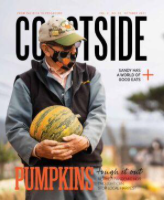The Hummingbird: A Universal Symbol of Joy and happiness
Hummingbirds are indigenous to North, Central and South America but they have become important to people in many other parts of the world. While each culture has its own unique interpretation, these tiny birds are universally revered as positive symbols of life, healing, bringers of good luck and hope. With so much to be worried about these days, attracting more hummingbirds to our gardens could be just what we need.
Hummingbird Varieties
There are three main species of hummingbirds in the coastal Bay Area: Anna's (Calypte anna), Allen's (Selasphorus sasin) and Rufous (Selasphorus rufus). Of the three, Anna's are the most numerous and widespread. The deep rose-red head and throat of the male Anna's hummingbird make them easy to spot. Allen's hummingbirds are slightly smaller with orange-red throats, iridescent green backs and reddish-brown tail feathers. Rufous hummingbirds are similar in color and size to Allen's but lack distinctive green feathers on their backs.
All species of hummingbirds have the same requirements; food (nectar, insects & spiders), fresh water and cover. Anna's is native to the area and due to the mild climate and year-round availability of food and water, most Anna's hummingbirds do not migrate.
Hummingbird Habitat
Bay Area hummers like to live in the openings and edges of forested areas/groves of trees and are also drawn to gardens with a wide variety of plants, especially natives. A blend of tall trees, shrubs and open patches of meadow or groundcover creates a habitat that will be attractive to hummingbirds. Originally from Australia, Eucalyptus trees are ubiquitous in Northern and Southern California and although problematic in fire-prone areas, they provide food and nesting sites for Anna's hummingbirds and other birds.
Favorite Blooms: Colorful and Shapely
Red tubular flowers are especially attractive to hummingbirds because the shape and color usually signal a rich source of high-octane nectar. Consequently, hummers will also visit orange and pink tubular flowers but find paler yellow and white blooms less appealing. Red, non-tubular flowers such as roses and geraniums may lure hummingbirds with their color, but they offer little nectar, so the birds quickly leave to find something else. Flowers that rely on sweet scents to attract insect pollinators usually do not provide a nectar source for hummingbirds.
The Ultimate Hummingbird Garden
The ultimate hummingbird garden is one full of native plants chosen for the specific growing conditions of the site and one that is designed for year-round seasonal blooms.
Although it might sound daunting at first, adding just a few plants can make a big difference. Here are a few examples of plants that attract hummingbirds:
CALIFORNIA NATIVES
- WINTER: Manzanitas, Chaparral Currant, Fuchsia-flowered gooseberry.
- SPRING: Pink-Flowering currant, Black sage salvia, Monkeyflower, Hummingbird sage.
- LATE SPRING: Penstemon centranthifolius
- SUMMER: Scarlet monkeyflower, California fuchsia, Red flowering current, Channel Island snapdragon.
- FALL: Aster
NON-NATIVE PLANTS:
- WINTER: Tobacco plant, Grevillea, Australian fuchsia
- SPRING/SUMMER: Salvia spp, Agastache spp, Penstemons spp, Zinnia, Thyme leaf fuchsia, Aloe, Echeveria.
- FALL: Salvias ssp.
HUMMINGBIRD EXTRAS
Although flowering plants are the best source of nectar for hummingbirds, adding to what's available in the garden provides extra food during the nesting season, migration and winter months.
Feeders should be filled with a solution made of one part refined white sugar to 4 parts water. Important: use only white sugar. Do not use honey, molasses or artificial sweeteners which, when mixed with water are breeding grounds for potentially fatal bacteria. Red food color is not necessary since natural nectar is clear. Bring the solution to a boil, let cool and fill the feeder. Store the remaining solution in the refrigerator and let warm to room temperature before refilling. When empty, wash hummingbird feeders thoroughly then refill with fresh solution. Monitor feeders and keep them filled with clean solutions. Solution that has become contaminated with dead insects, fungus or bacteria will kill hummingbirds.
A stationary birdbath is nice for songbirds but hummingbirds love fresh moving water. A small fountain or mister will attract them to your garden.
HUMMINGBIRD FUN FACTS
- Hummingbirds can hover and fly backward
- Hummingbirds move their wings in a figure-eight pattern
- When resting, a hummingbird breathes approximately 150 times per minute.
- A human with the same metabolic rate as a hummingbird would need to eat 300 hamburgers a day to survive.
- Hummingbirds are powerful pollinators. As they move from plant to plant, drinking nectar (up to 2X their body weight per day) they carry pollen.
- Hummingbirds can be identified by the sounds they make, either “twitters” or “squeaks.”
- Hummingbirds recognize the humans who take care of them.
- Some male hummingbirds dive up and down in the air to impress potential mates. In doing so they experience gravitational forces 10X normal. (Fighter pilots do not exceed 7Xg.)
Stephanie Erskine is a UC Master Gardener who welcomes hummingbirds in her pollinator garden. The article was edited by Maggie Mah and Cynthia Nations, UC Master Gardeners.
Attached Images:
